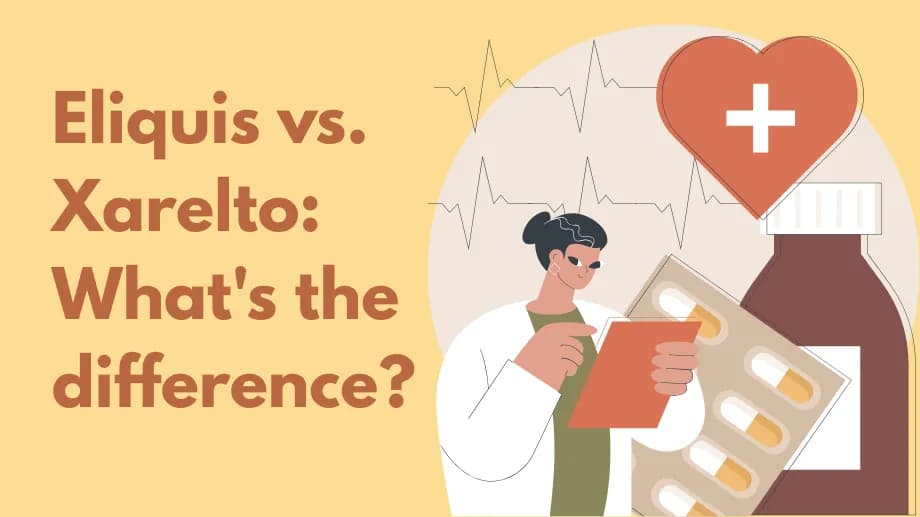What is deep vein thrombosis?
Deep vein thrombosis (DVT or venous thrombosis) is a medical condition that affects at least 1 million Americans each year. It occurs when a blood clot (thrombus) forms in one or more of the deep veins in your body, typically in the legs. These clots can cause swelling, pain, and redness in the affected area, but sometimes there might be no noticeable symptoms.
DVT is particularly dangerous because it can lead to serious complications. One of the most severe is pulmonary embolism, where a clot breaks loose, travels through the bloodstream to the lungs, and blocks a blood vessel. This can be life-threatening and requires immediate medical attention. When DVT and pulmonary embolism occur together, it is called venous thromboembolism (VTE).
Anything that stops your blood from flowing or clotting properly can cause a DVT. Factors that increase your risk include prolonged inactivity (such as long flights or being bedridden), surgery, certain medical conditions, pregnancy, and use of birth control pills or hormone replacement therapy.
Treatment for DVT typically involves anticoagulant medications, which help prevent the clot from growing and reduce your risk of further clotting. In some cases, clot-busting drugs, vein filters, or compression stockings may also be used.
What causes deep vein thrombosis?
DVT occurs when blood clots form in deep veins, most often in the legs. Risk factors include:
- Age (risk increases as you get older)
- Obesity or being overweight
- Smoking
- Pregnancy
- Injury or surgery
- Family history of clotting disorders (e.g., factor V Leiden)
- Inflammatory bowel diseases (Crohn’s disease, ulcerative colitis)
- Prolonged immobility (long flights, bed rest, paralysis)
- Heart problems (heart failure, heart attack)
- Vein diseases (varicose veins)
- Certain cancers and cancer treatments
- Lung disease
What are the symptoms of deep vein thrombosis?
Many people with DVT have no symptoms. When symptoms occur, they often appear in the affected leg (or arm) and may include:
- Swelling, often in one leg or arm
- Pain or tenderness, especially in the calf
- Redness or discoloration of the skin
- Warmth to the touch in the affected area
- Hard or rope-like veins near the skin’s surface
If you suspect DVT, seek medical attention immediately to prevent complications such as pulmonary embolism.
How is deep vein thrombosis diagnosed?
Diagnosis usually involves:
- Medical history and physical exam to assess risk factors and examine the limb
- D-dimer blood test to detect clot breakdown products
- Ultrasound (duplex ultrasonography) to visualize blood flow and detect clots
- Venogram, an X-ray with injected dye (used less often)
- MRI or CT scan in complex or inconclusive cases
How is deep vein thrombosis treated?
Treatment aims to prevent clot growth, reduce new clots, and avoid complications:
- Anticoagulants (blood thinners) such as warfarin, heparin, or direct oral anticoagulants (rivaroxaban, apixaban, etc.)
- Compression stockings to reduce swelling and prevent blood pooling
- Thrombolytics (clot-busting drugs) in severe cases, administered under close supervision
- Inferior vena cava filters for patients who cannot take anticoagulants or have recurrent clots
- Lifestyle changes: staying active, maintaining healthy weight, and avoiding prolonged immobility
- Management of post-thrombotic syndrome to address long-term discomfort and swelling
When should you see a doctor?
If you develop any signs of DVT, contact your healthcare provider immediately. Seek emergency care if you experience symptoms of pulmonary embolism, including:
- Sudden shortness of breath
- Chest pain that worsens with deep breathing or coughing
- Dizziness or lightheadedness
- Fainting
- Rapid breathing or pulse
- Coughing up blood
What lifestyle changes can help prevent deep vein thrombosis?
- Stop smoking
- Control blood pressure
- Maintain a healthy weight
- Avoid long periods of sitting or immobility
- Exercise regularly (walking, cycling, swimming)
- Avoid tight clothing for extended periods
- Stay hydrated; limit alcohol and caffeine
- Include natural blood-thinning foods (ginger, garlic, vitamin E, cayenne, cinnamon, turmeric)
Sources
- What is Venous Thromboembolism (VTE)? American Heart Association. Accessed Apr. 15, 2024.
- Venous Thromboembolism (Blood Clots). Centers for Disease Control and Prevention. Accessed Apr. 15, 2024.
- Venous thromboembolism. National Heart, Lung, and Blood Institute. Accessed Apr. 15, 2024.
- Jameson JL, et al. Pulmonary thromboembolism and deep-vein thrombosis. In: Harrison’s Manual of Medicine. 20th ed. McGraw Hill; 2020. Accessed Apr. 15, 2024.
- Deep Vein Thrombosis (DVT). Medscape. Accessed Apr. 15, 2024.


